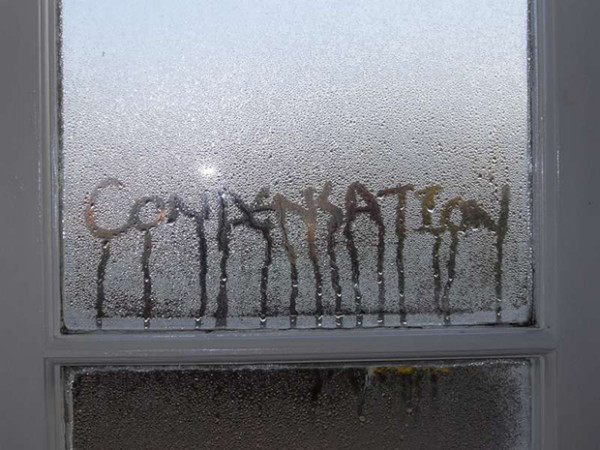Where does condensation come from?
For the purpose of this article we are talking about condensation on the inside surface of a window where you can touch it. For condensation between panes or on the outside see: HERE
The answer is very often, ourselves. When food is cooked or kettles boiled a plume of steam rises from the pot. Where does this go? Unless it is removed by an extractor, the answer is into the air in your home. When you have a shower the steam from the shower goes into the air. If the bathroom walls, shower-screen and floor are wet afterwards but dry two hours later, then that moisture is now in the air in your home. Indeed, if you have put the towel over the back of a chair or on a radiator then the water you have dried from yourself is now evaporating slowly into the air inside your home. As if all of this wasn’t enough, with no drying outside, many washed close end up on clothes horses inside the home and by now you can probably guess where all that moisture is going to go? These effects are magnified if the living space is small as the volume of air available to absorb the moisture is less.
The problem with condensation
Condensation is unsightly. The excess moisture can cause mould and mildew on the edges of the window frame, the walls and the curtains. This mould in turn can produce spores that are unhealthy for all of us but particularly of concern to people with a range of respiratory conditions such as Asthma, COPD among others.

To reduce condensation we must:
Always use an extractor fan when cooking. Keep the kitchen door closed to prevent the moist air traveling around the rest of the house.
Never dry clothes indoors. Ensure tumble-dryers are vented to the outside.
When using showers, the bathroom door should be kept closed both during and afterwards and the window in the bathroom should be open, if not during the shower then definitely afterwards, until all signs of moisture are gone.
Open windows whenever possible to air-out the house.
Don’t block vents in walls or windows.
Try to maintain a steady temperature in the house throughout the day and night. Many of us turn off the heating overnight but as air cools down its ability to hold moisture is reduced. That moisture is then deposited on the coldest surfaces around the house, usually as condensation on windows.
Conclusions
Condensation on the window pane is not usually caused by a problem with your windows. It is more often a result of the home environment and lifestyle. While you could upgrade the glass to high performance or indeed replace the whole window, there are much easier ways to reduce condensation build. You can make simple changes that will reduce the problem. Unless you are willing to spend substantial sums of money on window upgrades, you should first try making the few small changes mentioned above and see what improvement you can achieve without spending a penny.
Are your windows draughty? CLICK HERE to learn more










